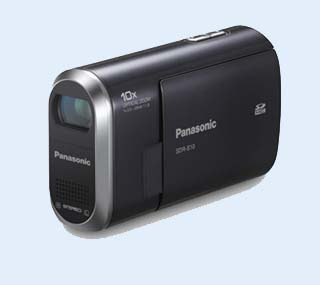
Go Green Now: Save Energy Through Smart IT
You've heard that going green in your IT planning is not only good for the environment, but good for your company's budget. But where to start? I asked two top technology executives for five quick steps that they suggest a CIO should take to start moving forward on a green agenda. But this is just a start; if you have a "five quick steps" suggestion please send me an email directly at Eric_Lundquist@ziffdavis.com.Thomas Russo is the chief technology officer at Akridge Real Estate Services in Washington, D.C. He is a CTO with boundless energy to talk to you about saving energy. His advice spans an area of interest that ranges beyond traditional IT areas, but expanding your sphere of concern is also a way to expand your sphere of management. Here are his five quick steps:
1. Use motion-sensor-controlled lighting on building automation systems. Remember the following areas and techniques.
* Stairwells
* Daylight harvesting sensors that automatically adjust lighting to amount of daylight. Some studies show an 84 percent savings using these sensors.
* Parking garages
* Bathrooms
* Common areas
* Elevators
Don't forget: In some areas the lights cannot be turned off, but they can be dimmed. Dimming most lights is a 1 to 1 ratio of savings (50 percent on equals a 50 percent savings) including CFL (compact fluorescent lights).
2. Push building management to replace all incandescent bulbs with CFLs, LED lighting, or just more efficient bulbs.
3. Use variable speed drives on motors where possible, for example:
* Escalators can use motion sensors rather than constant operation
* Domestic water pumps can pump only the volume needed, not constantly at full speed.
4. Design, Design, Design -- whether retro-fitting or new design, energy efficiencies should be considered early.
* Design new buildings with no incandescent bulbs.
* Be part of the development and design teams. Help them find energy efficient solutions in the early stages of design and development.
5. Monitor electrical savings to prove return on investment
* Various software and hardware options are available to monitor the consumption of all utilities.
James Whalen is the senior vice president and CIO of Boston Properties. He is widely recognized as one of the top technology executives in melding IT, building systems and business processes into a comprehensive energy management system. As Jim noted to me in an email, "the biggest (green) 'opportunity'" is reducing energy consumption and heat output in the data center, but, unless one is confronted with life cycle rollover or a move, it is difficult to justify purely on '"green" benefits. However, IT is confronted with life-cycle rollover decisions every year. He also raised an interesting question: For buildings, one seeks a LEED (Leadership in Energy and Environmental Design) certification that requires the accumulation of points for various components ... maybe we need a corresponding point system for IT efforts in this area? Here are his suggestions:
1. Virtualization -- You can dramatically cut the number of servers while also investing in the latest "efficiency" servers, thereby eliminating legacy and inefficient servers. In one case, Boston Properties virtualized 24 existing servers down to four.
2. Power settings -- This is a practical suggestion enabled by enforcing policy level standards across all desktops, laptops and printers.
3. Data center redesign -- This is usually only prompted during life-cycle rollover or a required move. Jim noted that his group recently built a new center and proactively re-engineered elements to reduce energy consumption and heat output.4. Cut paper -- A practical suggestion enforced by proactively reducing paper output through imaging and marketing best practices on printer usage.
5. Recycle -- Again a practical suggestion enforced by a policy requiring proper recycling of older computers.


